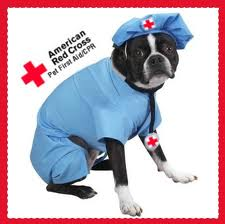Colorado Springs Pet Ordinances
 Colorado Springs and El Paso County have ordinances regarding pets. For now, let’s look at the Colorado Springs Dog Ordinances.
Colorado Springs and El Paso County have ordinances regarding pets. For now, let’s look at the Colorado Springs Dog Ordinances.
Pet Licensing for Dogs and Cats. All dogs and cats at least four months old must have current rabies vaccine and a current license. You can license your pet online or print out a licensing form at www.hsppr.org or call (719) 473-1741 x 127. Licenses may be purchased for one or three years. Fees are discounted for spayed and neutered animals, pets of senior citizens, and for purchasing a three-year license.
Barking Dogs. Constant barking can seriously disrupt the peace of a neighborhood. It is illegal to disturb the peace at any time of day, and owners of disruptive pets may face fines or even a court appearance. If a neighbor’s noisy pet frequently bothers you, call Animal Control (719) 473-1741 to learn about possible courses of action. Personal experience is that more than one person and more than one complaint are necessary to engage Animal Control.
Leash law. Al dogs must remain leashed while on public land. Dogs and other animals found roaming off their owner’s or keeper’s property are considered stray and may be impounted by an Animal Welfare officer. The owner or keeper may be fined for violating the leash law.
Animal Cruelty & Neglect. It is illegal to mistreat a dog or any other type of pet, whether by active cruelty such as beating or by neglect such as failure to provide appropriate food, water and shelter to the animal. If you suspect an animal is being mistreated, call Animal control at (719) 473-1741 to request an investigation.
Dangerous Animals. It is illegal for anyone to own or keep an animal that attacks or threatens to attack a person. Dangerous animals should be reported to Animal Control. The animal may be impounded or placed under special containment requirements.
For more information on local dog ordinances visit www.hsppr.org














